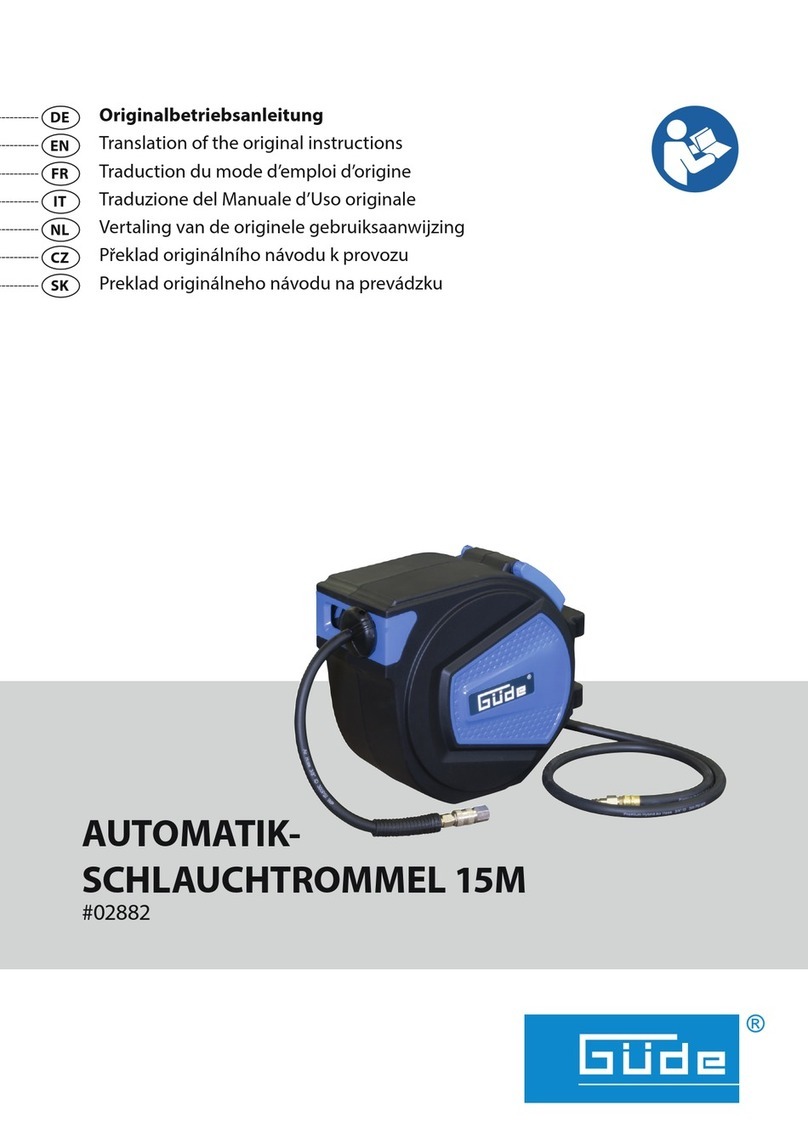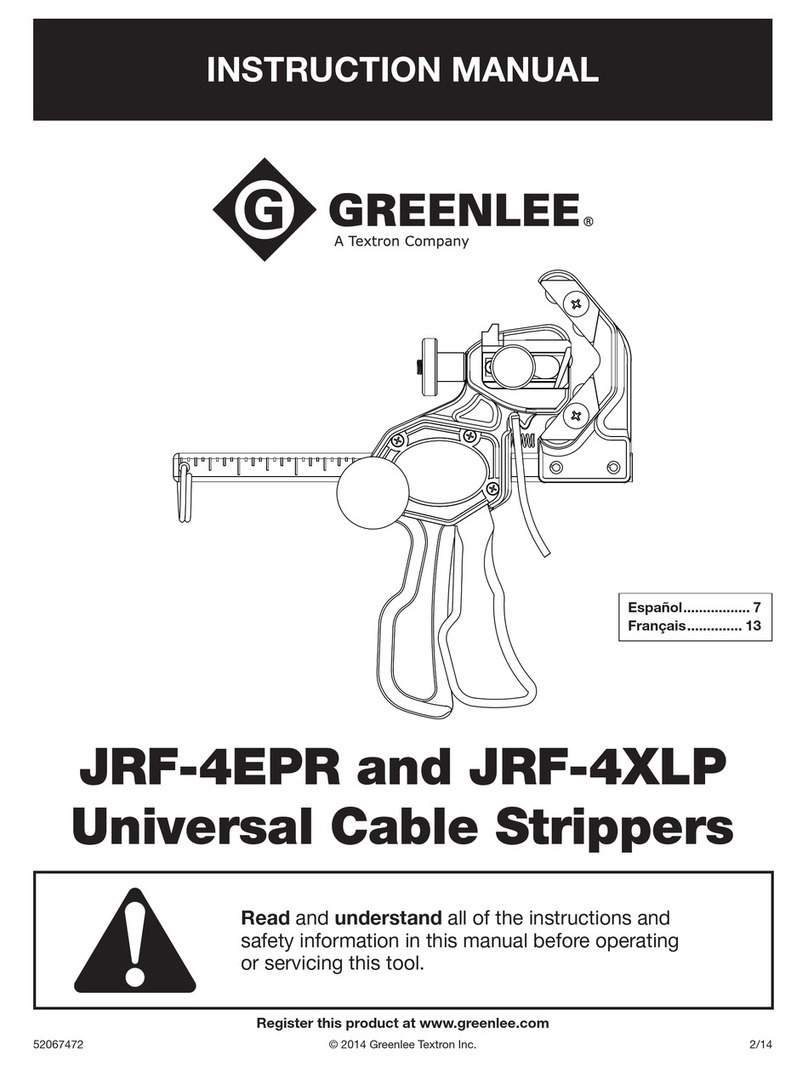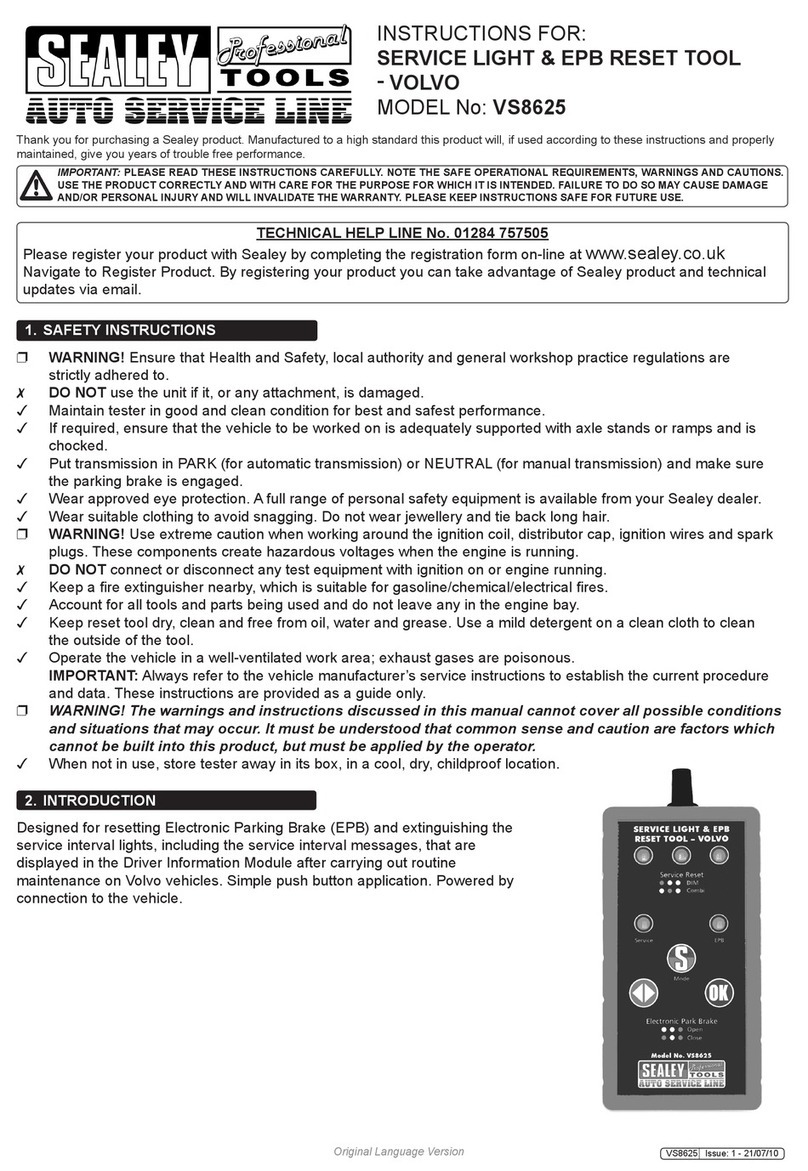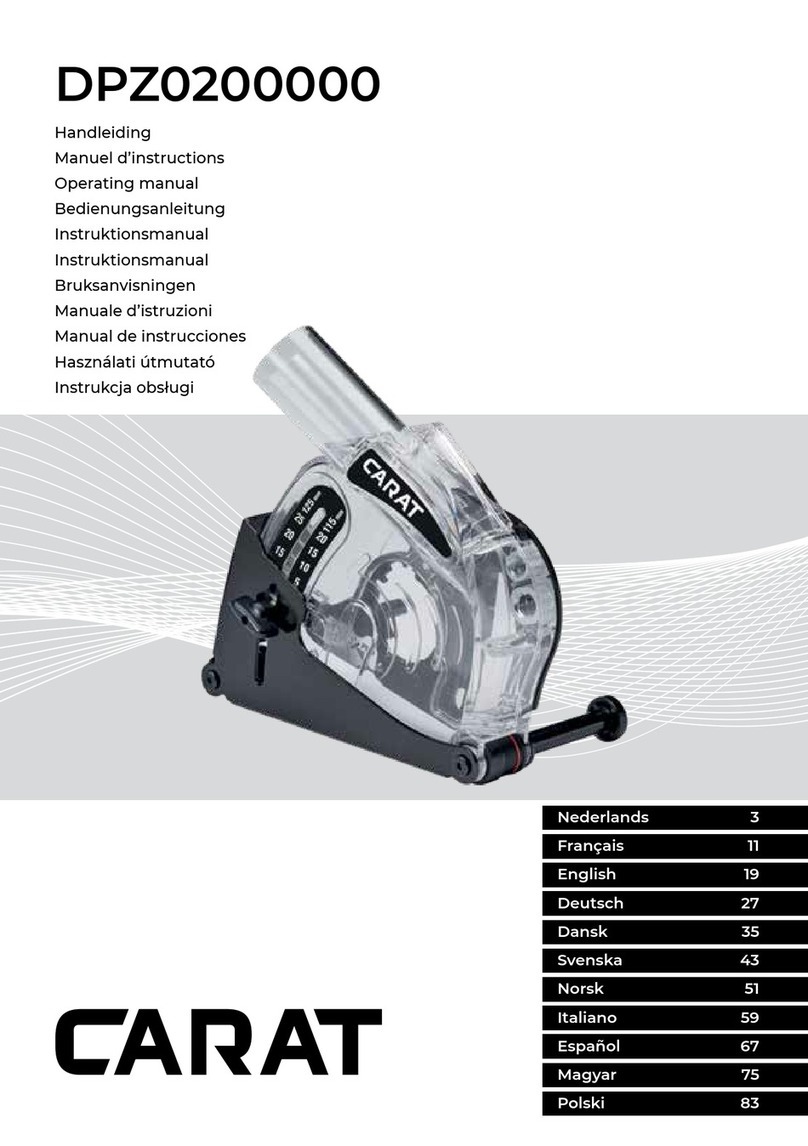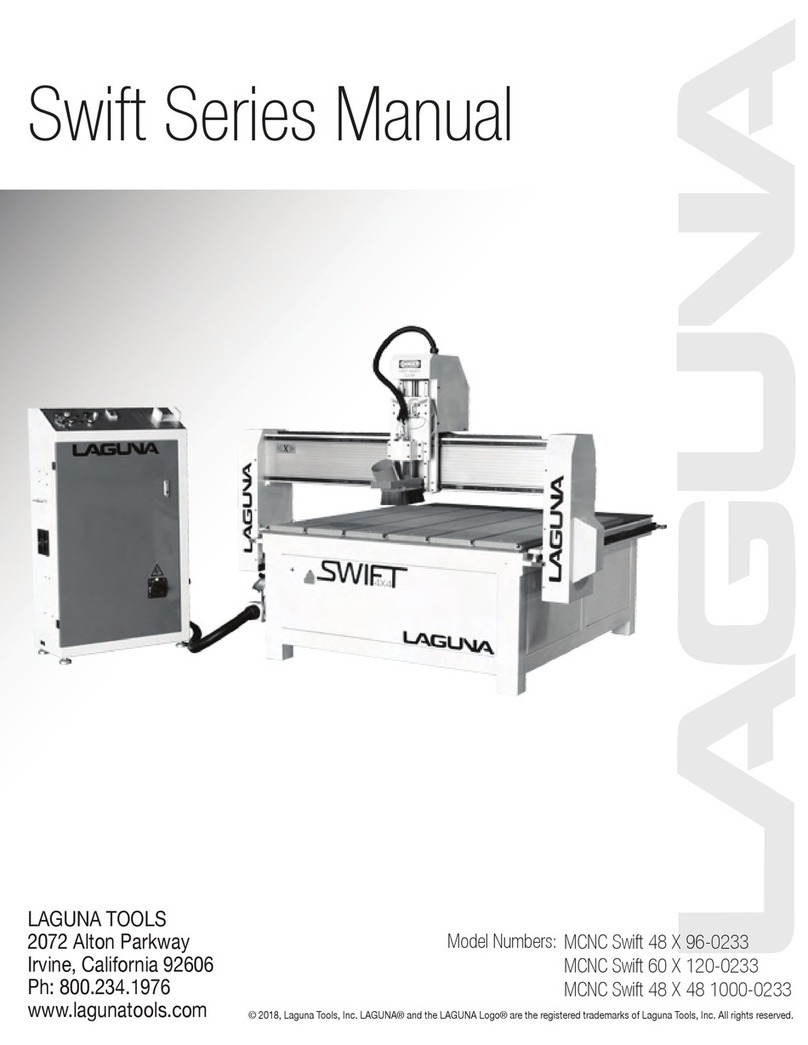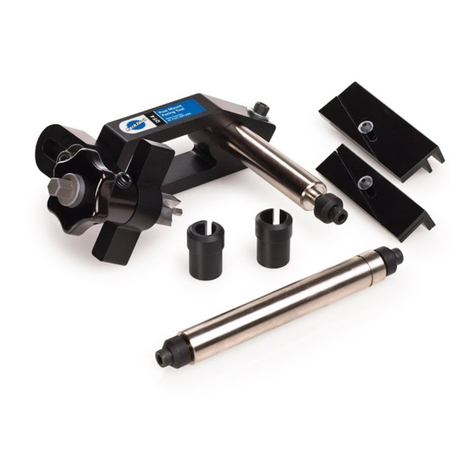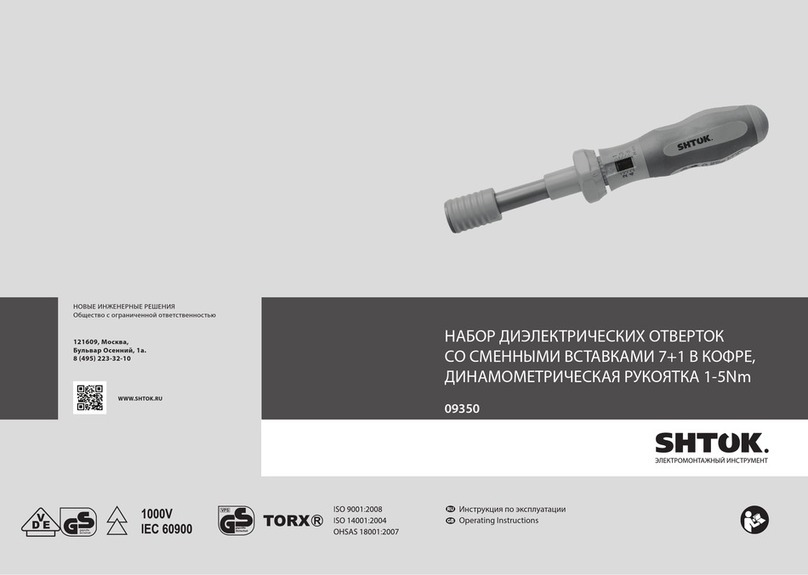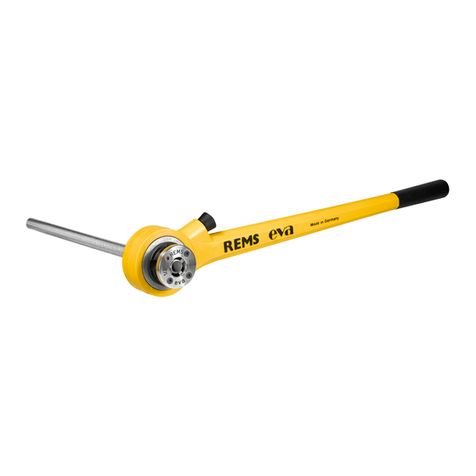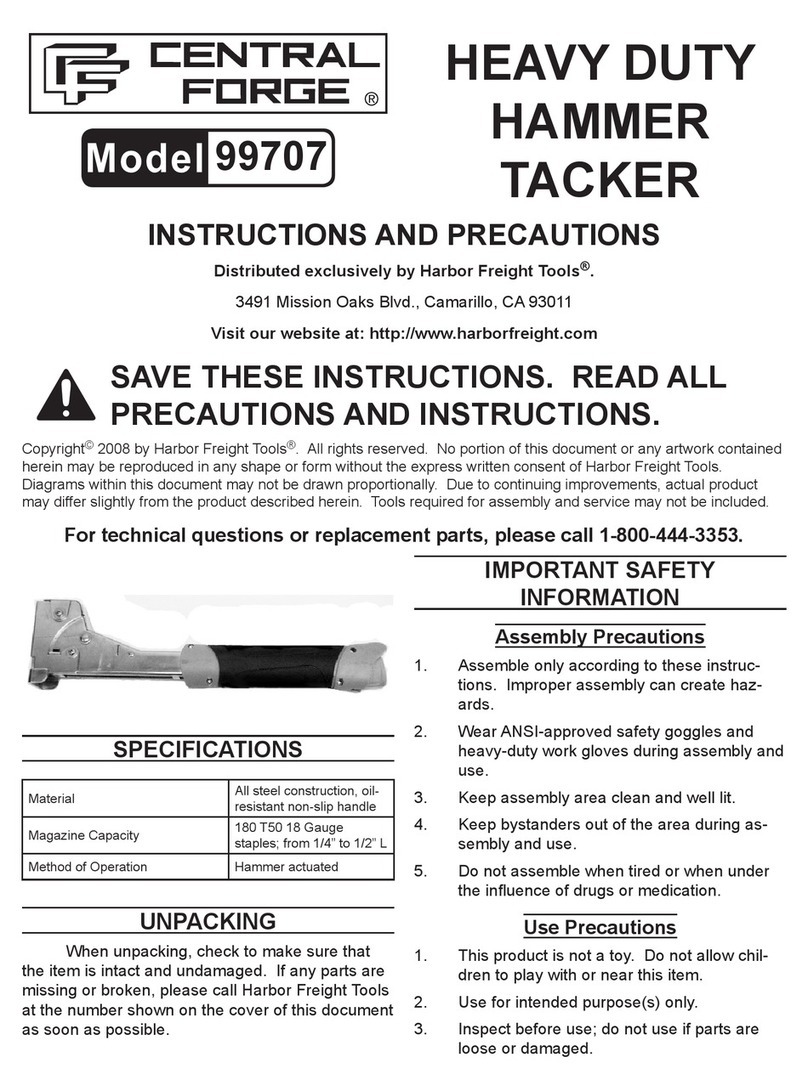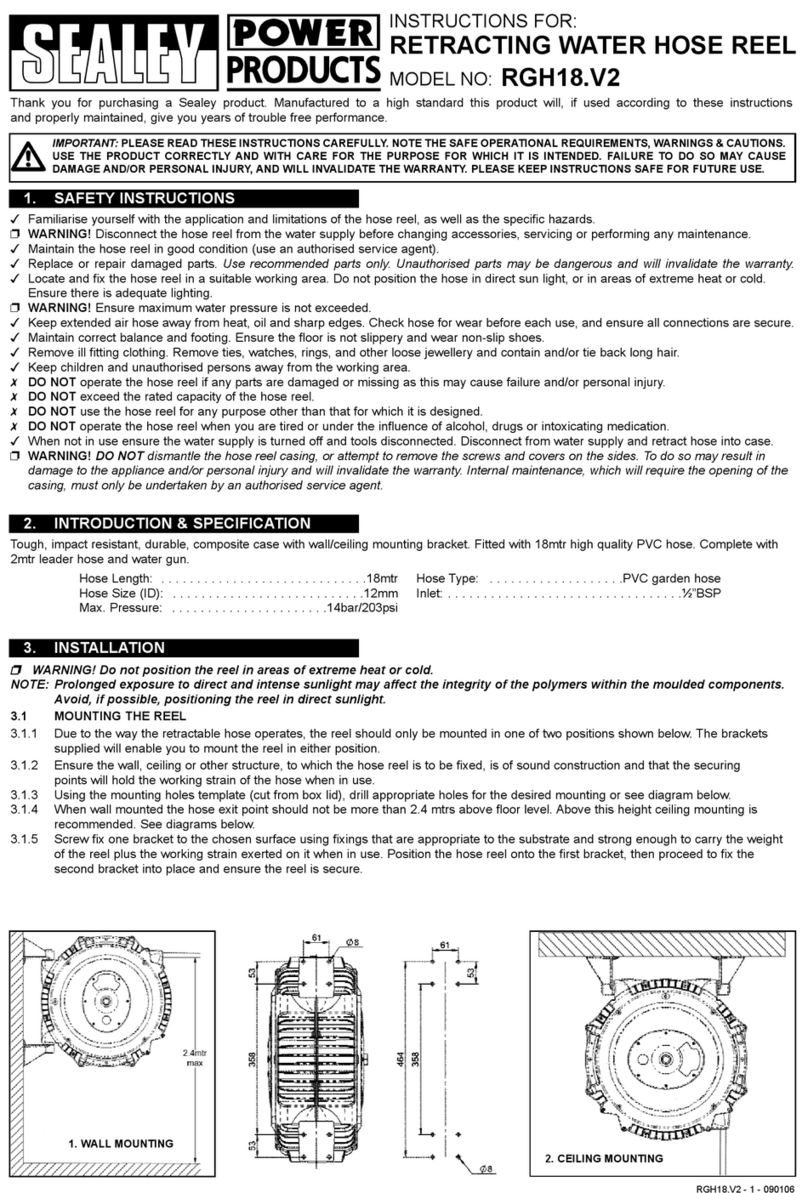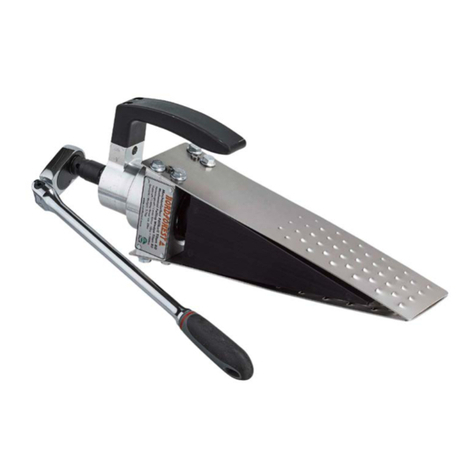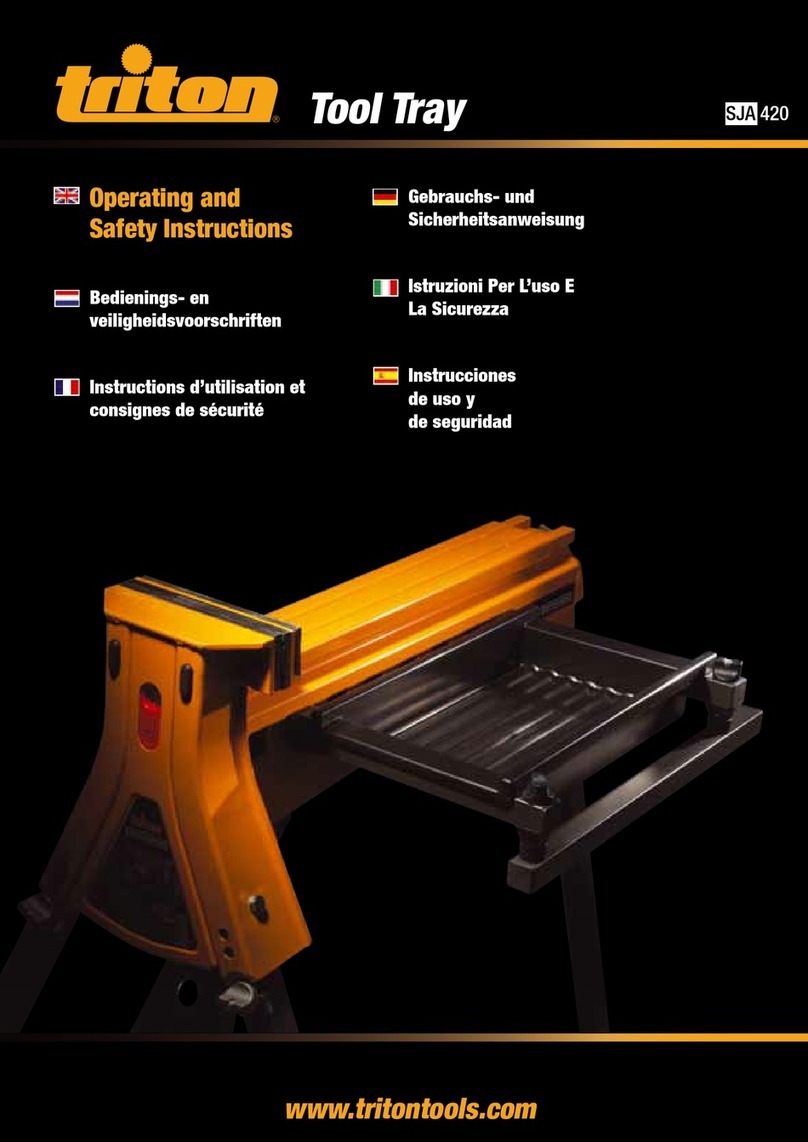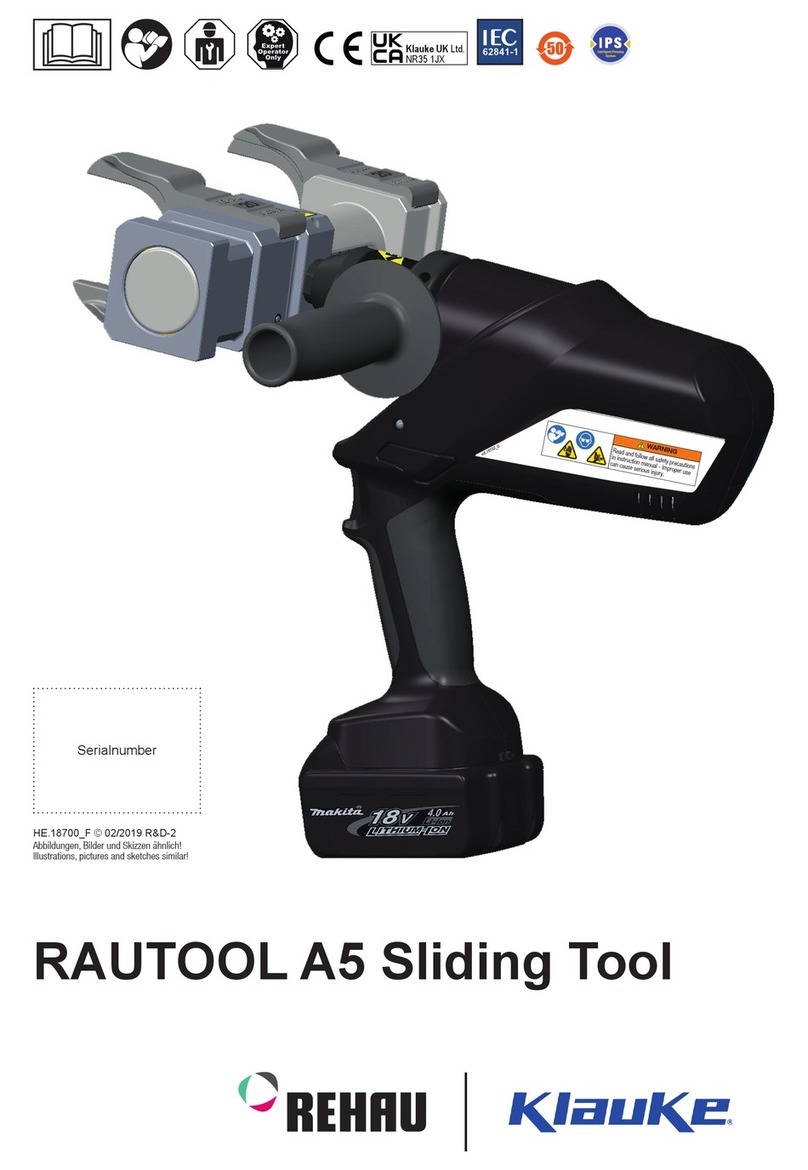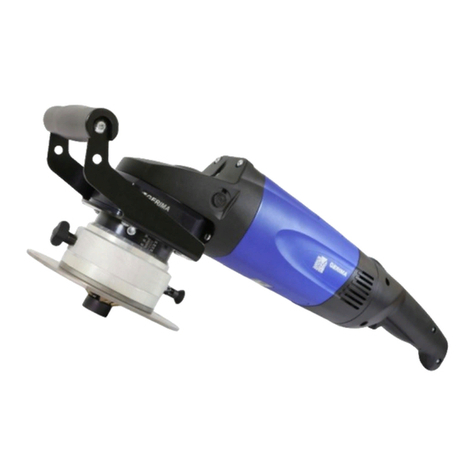CINCH OPM1730 User manual

USER MANUAL
MANUEL DE L’UTILISATEUR
MANUAL DE USUARIO
GEBRAUCHSANLEITUNG
CHECK RACEFACE.COM / EASTONCYCLING.COM
FOR INSTALLATION UPDATES

2 3
TABLE OF CONTENTS
A. NOTICES..........................................................................3
B. SPECIFICATION................................................................3
C. INSTALLATION..................................................................4
D. CHARGING.......................................................................4
E. TURN ON THE POWER METER ..........................................5
F. PAIRING ..........................................................................6
G. CALIBRATION / ZEROING .................................................7
H. SMARTPHONE APPLICATION.............................................8
I. FIRMWARE ......................................................................9
J. TRAINING USE .................................................................9
K. MAINTENANCE...............................................................10
L. IMPORTANT PRODUCT INFORMATION.............................11
A. NOTICES
The information in this manual is subject to change without notice. We reserve the right to change
and improve the product as well as the manual without obligation to inform about changes.
You are encouraged to visit eastoncycling.com and raceface.com for updates and supplementary
information concerning use and operation of this product.
B. SPECIFICATION
• Battery: Lithium Ion rechargeable - usage time is approximately 500 hours.
• Battery charging: Micro USB for standard 500mA phone charger
• Power meter thermal protection: Double redundant thermal protection circuit
• Wireless transmission: 2.4GHz, ANT+™ and Bluetooth® Smart (4.0)
• Accuracy: +/-2% of measured power
• Power measurement range (watts): 0 – 1999
• Cadence range (RPM): 30-200
• Water resistance rating: IPX7
WATER RESISTANCE NOTICE
The product is designed to provide excellent water resistance and tested to resist water
penetration to the IPX7 standard (up to 1 meter). This provides outstanding water resistance
for cycling conditions both off-road and on-road, including stream crossing, heavy rain and
bike washing. Please keep in mind that electronic devices are inherently sensitive to water and
that there are limits to the water resistance. Do not subject the product to direct spray from a
high pressure sprayer. It is possible for water to be forced past the seals and damage to the
electronics may occur.
NOTE: To help with protection of the antenna and insure maximum water resistance please keep
the antenna cap on and securely fastened at all times, except when charging.
BATTERY WARNING: The product contains a rechargeable Li-Ion battery, do not try to replace
battery as this will void warranty and potentially damage the product. Please refer to local
regulations regarding air transport of the power meter and Li-Ion batteries.
ENGLISH

4 5
C. INSTALLATION
• Refer to Cinch Bottom Bracket install guide
for frame compatibility and Bottom Bracket
installation.
• Refer to Cinch Power Meter spindle installation
guide for correct installation of power meter
spindle into Cinch crankset.
• Refer to Cinch crankset installation guide for
correct installation of crankset into bicycle.
D. CHARGING
For charging use a standard USB phone charger. Using the supplied Micro USB cable plugged into a
USB wall plug is recommended but an alternative Micro USB cable will also work. These are widely
available and should be rated minimum 500mA (most common).
1. Remove the protective cap using the supplied tool (RF part no. D30512)
2. Connect the supplied Micro USB cable to the Micro USB charging port on the end of the Cinch
Power Meter spindle under the protective cap and the other end to a USB charger wall plug or
USB port on a computer or other device.
NOTE: You do not need to remove your cranks from your bicycle or the Cinch Power Meter
spindle from the cranks in order to charge the battery.
3. If for some reason you are using a different Micro USB cable be careful that the end plugging
into the Cinch Power Meter is not excessively thick as it could impact your ability to see that
the cable connector is going straight into the port and is not interfering with other parts of the
power meter.
NOTE: As soon as the Cinch Power Meter is plugged in it will no longer be transmitting data.
While plugged in the Cinch Power Meter cannot connect to the App, pair with a head unit, or
transmit data of any sort.
4. The LED light turns a solid red to indicate that the power meter is charging and the red LED
light will remain on until the battery is fully charged at which point the LED light will turn off.
5. Once the Cinch Power Meter is charged carefully unplug the cable and replace the protective
cap using the supplied tool.
NOTE: Head Unit Low Battery Warning – Many ANT+ enabled head units display a low- battery
warning when a sensor, such as the Cinch Power Meter, battery level drops below 10%
remaining. Once this warning is displayed you still have approximately 10 hours of battery life
left in the Cinch Power Meter. When the Low Battery Warning is displayed it is recommended
that you recharge your Cinch Power Meter.
E. TURN ON THE POWER METER
First Use – Airplane Mode
The Cinch Power Meter is shipped in Airplane mode. In this setting the
transmitting functions have been deactivated and no power is travelling
through the electronics. This mode is recommended for shipping and
ying with the Cinch Power Meter. To turn off Airplane mode and allow
for the transmission of data simply plug the Cinch Power meter using
the micro USB cable into a live power source.
NOTE: In order to conserve power, the power meter will automatically
turn off and go into sleep mode after 5 minutes of no crank rotational
movement.
• To turn on the power meter, simply turn the crank 1-2 rotations
either way with the bike in the upright position.
• The LED light will blink green when the Cinch Power Meter rotates
but once installed on a bicycle with the protective cap you will not
be able to see the LED light.
NOTE: When transporting the Cinch Power Meter in a vehicle in sleep mode, the movement can
possibly cause the transmitting function to turn on. To conserve battery power during extended travel
it can be advantageous to put the Cinch Power Meter into Airplane mode using the Cinch Power Meter
App. You will need a power source at destination to turn the power meter back on.
Figure 1. Airplane Mode Dialog
[SERIAL NUMBER]

6 7
NOTE: Refer to Calibration/Zeroing in Section G for recommendations regarding your Cinch Power Meter.
ANT+ and BLE Head Units
Many new cycling computer head units have both ANT+ and BLE capabilities. Please refer to
your head unit manual as your head unit may have a preferred communication standard for
communicating with a power meter.
Using BLE on Smartphone
Turn on Bluetooth (and for some versions of Android also turn on location) on the smartphone. Open
the Cinch Power Meter app and navigate to the menu screen and then click on Connect to Device.
The app will now search for the device and the power meter will need to be transmitting and within 3
meters (10ft) of the smartphone.
NOTE: To get the Cinch Power Meter transmitting simply turn the crankset a couple revolutions.
The Cinch Power Spindle will show up with a name of the form CINCH-xxxxx (here xxxxx can be any
number up to 5 digits, and is the same number used as ANT+ ID number).
G. CALIBRATION / ZEROING
Calibration, also known as zeroing, is an
important step in ensuring the accuracy
of the power measurement generated
by the Cinch Power Meter. Changes in
bolt torque, crank conguration and a
number of other factors can impact the
calibration of a power meter. The purpose
of zeroing/calibration is to align a zero
measurement from the Cinch Power
Meter with a real world zero value where
your power meter is in a static state.
There is no need to calibrate the
Cinch Power Meter for every ride, but
periodic calibration is recommended
and especially after any mechanical changes to the crank such as changing pedals, chain rings,
installation of the crank, tightening of bolts etc.
NOTE: If your Cinch Power Meter is generating questionable power values, such as displaying a
positive power value while not pedaling then your power meter needs to be calibrated.
LED
A LED light indicator will be visible when the protective cap is removed (for access to the micro USB
charging port). The LED light has the following states:
• Solid red: Charging and power meter is off
• Off: Charging completed (power meter is off)
• Short green ashes: On
• Short green double-ashes: In rmware upgrade mode
Reset
If the Cinch Power Meter freezes, crashes, or is misbehaving it can be reset by connecting the
power meter to a power supply using the Micro-USB charging cable. The charging cable only needs
to be connected for a few seconds with a solid red LED light for the reset to occur and can then be
unplugged and normal usage resumed.
NOTE: If issues continue connect the Cinch Power Meter device to the Cinch Power Meter smart phone
application and update to the current version of the Cinch Power Meter rmware.
F. PAIRING
Using ANT+ on Bike Computer or Smartphone
ANT+ Head Unit Pairing
Connect the power meter with any device that is ANT+ compatible and supports a power prole.
Please check the manual of your chosen device to conrm that it is power meter compatible, as it is
possible for a device to be ANT+ compatible but not able to display power meter information.
Follow the pairing instructions specic to your head unit as listed in your head unit manual.
NOTE: Pairing can usually be done automatically by searching for power meters, however during
rst-time-pairing identifying your specic Cinch Power Meter could be difcult if there are other
unpaired power meter devices located nearby, such as at the beginning of a group ride. In the event
of multiple devices move more than 10meters (30ft) away from all other devices, this will make it
easier to determine what listed device is your Cinch Power Meter.
NOTE: In order to connect to your ANT+ device the Cinch Power Meter must be active and transmitting;
this can be done by simply turning the crankset a couple revolutions. Once your head unit has paired
with your Cinch Power Meter it should store the unique Cinch Power Meter ID and automatically
connect to it every time you ride. After the initial pairing it is strongly recommended that you calibrate
using your head unit. Review your head unit user manual for correct calibration procedure.
Figure 2. Connect To Device Figure 3. Calibration Dialog
SELECT A METER
CONNECT
CONNECT
CONNECT
CONNECT TO DEVICE
REFRESH LIST
SG52-56158
C3:7B:17:95:DB:5E CALIBRATE
SG55-56160
C4:7B:17:96:DB:5G
SG55-56250
C4:7B:17:96:DB:5G
SG55-56181
C4:7B:17:96:DB:5G
UNCLIP FROM PEDALS.
LET LEFT ARM HANG DOWN.
SELECT CALIBRATE.
[SERIAL NUMBER]
CALIBRATE

8 9
Calibration Process
• Turn on the Cinch Power Meter (Achieved though turning the cranks)
• Place the bike in the upright position and the left (non-drive) side crank arm pointing straight
down (pedal closest to the ground). Do not put any weight on the pedals.
• Using an ANT+ bike computer, follow the instructions for the bike computer to send the
CALIBRATE command. Typically under Settings/Bike Proles/Bike/ANT+ Power
• Using a smartphone connected through BLE, use the Cinch Power Meter app and select Calibrate
in the menu.
H. SMARTPHONE APPLICATION
The Cinch Power Meter smartphone application is available for both
iPhone and Android phones. The application can be found in both the
iOS App store and Google Play store.
The primary function of the Cinch Power Meter application is to update
the rmware, set to Airplane mode for shipping and travel, and to
check battery levels. The application will also display power, cadence,
torque effectiveness, and pedal smoothness while the Cinch Power
Meter is in use.
NOTE: The Cinch Power Meter smartphone application does not record
any ride data. For data logging please use your head unit or third party
data recording apps that offer BLE pairing functionality. (i.e. Strava
Live, dependent upon version and account).
I. FIRMWARE
The Cinch Power Meter uses specic rmware which controls the
internal calculations that the device does before transmitting
data. Firmware should be periodically updated to ensure the best
performance and accuracy from the Cinch Power Meter.
Firmware Update Process
• Turn on the Cinch Power Meter (Achieved though turning the
cranks while in sleep mode)
• Install the Cinch Power Meter Application on your Smart Phone
• Open the Cinch Power Meter application and scan for device.
• Select the sensor number that matches your Cinch Power Meter to
pair.
NOTE: If multiple Cinch Power Meters are within 3 meters (10 feet) of your smartphone multiple
sensors may be visible. Refer to Pairing, Section F, for suggestions regarding nding your unit.
• An Icon in the Dropdown Menu indicates if there is a Firmware Update available.
• Select the newest Firmware version and click Update Now.
• Firmware will now update, if the update is taking more than a couple minutes the Cinch Power
Meter may need to be rotated to ensure it does not go into sleep mode. Note: Do not move away
from the Cinch Power Meter until the Firmware update has reached 100%.
Low Battery Notice: If the Cinch Power Meter battery is too low then the device will not be able to do
a Firmware update. Please follow the charging procedure listed is Section D and then complete the
rmware update process.
J. TRAINING USE
After pairing the power meter to the bike computer or smartphone of your choice, the following elds
of data should be available:
Power
This is the instantaneous power output typically measured in watts which is calculated by
multiplying torque by cadence. Power data is transmitted to the head unit and 2 Hz (twice per
second) with the maximum frequency of power display typically being every second.
Most ANT+ enabled head units also have various power averaging and maximum power display options
that are all based off this power number. Please refer to your head unit user manual for details.
Cadence
Cadence is measured by built-in accelerometers within the Cinch Power Meter and is displayed in
RPM (revolutions per minute).
Torque Effectiveness (Figure 6 on page 10)
The ratio between total torque and negative torque delivered in a single crank rotation. This value
increases as you decrease the negative torque typically seen on the up-stroke of the foot.
Pedal Smoothness (Figure 6 on page 10)
The ratio between total torque and maximum torque delivered in a single crank rotation. This value
increases when the torque throughout the entire crank revolution gets more equal.
Figure 4. Main Dashboard
Figure 5. Dropdown Menu
CADENCE
TORQUE EFFECTIVENESS
1520
90
25%
PEDAL SMOOTHNESS
25%
METER BATTERY
RPM
POWER
W
[SERIAL NUMBER]
CONNECT TO DEVICE
CALIBRATE DEVICE
FIRMWARE UPDATE
DEVELOPER SETTINGS
MENU

10 11
K. MAINTENANCE
After all rides and transport the product should be inspected for product damage including chips,
dents and serious scratches. If damage is discovered please contact your Easton or Race Face dealer
for additional inspection and evaluation.
Primarily, maintenance for the Cinch Power Meter consists of periodically checking the bolts for
correct torque and checking that the water tight cap on the end of the non-drive side spindle is
sufciently tight and fully sealed.
To ensure accuracy and optimized performance the calibration procedure should be periodically
completed on your ANT+ head unit and the device rmware updated using the Cinch Power Meter
App on your smart phone.
WARNING: Do not attempt to disassemble or take apart your Cinch Power Meter, this will damage the
product and void the warranty.
L. IMPORTANT PRODUCT INFORMATION
Contact Information:
RFE Holding (Canada) Corp.
#209 - 8327 East Lake Drive Burnaby, BC V5A 4W2 Canada
www.raceface.com
www.eastoncycling.com
Product Information:
Product Name: Cinch Power Spindle
Model Name: OPM1730
FCC ID: Contains FCC ID: O6R2398
IC ID: Contains IC: 3797A-2398
California Proposition 65
The enclosed hardware and its packaging contain chemicals the State of California has found to
cause cancer, birth defects or reproductive harm.
RoHS
We hereby certify that this product and its packaging are in compliance with European Union
Directive 2011/65/EU on the Restriction of the Use of Certain Hazardous Substances in Electrical and
Electronics Equipment, commonly known as RoHS.
FCC Rules Part 15
The enclosed hardware device complies with part 15 of the FCC Rules. Operation is subject to the
following two conditions:
(1) This device may not cause harmful interference and
(2) it must accept any interference received, including interference that may cause undesired
operation.
FCC Compliance Statement:
This equipment has been tested and found to comply with limits for a Class B digital device,
pursuant to Part 15 of the FCC rules. These limits are designed to provide reasonable protection
against harmful interference in residential installations. This equipment generates, uses, and can
radiate radio frequency energy, and if not installed and used in accordance with the instructions,
may cause harmful interference to radio communications. However, there is no guarantee that
interference will not occur in a particular installation. If this equipment does cause interference to
radio or television equipment reception, which can be determined by turning the equipment on, the
user is encouraged to try to correct the interference by one or more of the following measures:
• Reorient or relocate the receiving antenna
• Increase the separation between the equipment and receiver
• Connect the equipment into an outlet on a circuit different from that to which the receiver is
connected.
• Consult the dealer or an experienced radio/TV technician for help
Figure 6. Torque Effectiveness & Pedal Smoothness
P+
Crank angle
Power
Pmax
Pavg
Teff = (P++ P-) / P+and Psm = Pavg / Pmax
P-

12 13
To assure continued compliance, any changes or modications not expressly approved by the party
responsible for compliance could void the user’s authority to operate this equipment. (Example- use
only shielded interface cables when connecting to a computer or peripheral devices).
The product does not contain any user-serviceable parts. Unauthorized repairs or modications could
result in permanent damage to the equipment, and void your warranty and your authority to operate
this device under Part 15 regulations.
CAUTION! The manufacturer is not responsible for any radio or TV interference caused by
unauthorized modications to this equipment. Such modications could void the users authority to
operate the equipment.
IC Statement
This device complies with Industry Canada license-exempt RSS standard(s). Operation is subject to
the following two conditions: (1) this device may not cause interference, and (2) this device must
accept any interference, including interference that may cause undesired operation of the device. The
device meets the exemption from the routine evaluation limits in section 2.5 of RSS 103 and users
can obtain Canadian information on RF exposure and compliance.
Le présent appareil est conforme aux CNR d’Industrie Canada applicables aux appareils radio
exempts de licence.
L’exploitation est autorisée aux deux conditions suivantes: (1) l’appareil ne doit pas produire
de brouillage, et (2) l’utilisateur de l’appareil doit accepter tout brouillage radioélectrique subi,
même si le brouillage est susceptible d’en compromettre le fonctionnement. Le dispositif rencontre
l’exemption des limites courantes d’évaluation dans la section 2.5 de RSS102 et les utilisateurs
peuvent obtenir l’information canadienne sur l’exposition et la conformité de rf.
CE Statement:
Europe – EU Declaration of Conformity This device complies with the essential requirements of
the R&TTE Directive 1999/5/EC. The following test methods have been applied in order to prove
presumption of conformity with the essential requirements of the R&TTE
Directive 1999/5/EC:
EN 60950-1:2006+A12:2011
EN 55022+EN 55024(2010)
EN 301 489-1 V1.8.1(2008-04)
EN 301 489-3V1.4.1(2002-08)
EN 300 440-2 V1.3.1(2009-03)
This device is a 2.4 GHz wideband transmission system (transceiver), intended for use in all EU
member states and EFTA countries, except in France and Italy where restrictive use applies. In
Italy the end-user should apply for a license at the national spectrum authorities in order to obtain
authorization to use the device for setting up outdoor radio links and/or for supplying public access
to telecommunications and/or network services. This device may not be used for setting up outdoor
radio links in France and in some areas the RF output power may be limited to 10 mW EIRP in the
frequency range of 2454 – 2483.5 MHz. For detailed information the end-user should contact the
national spectrum authority in France. We hereby declare that these products are in compliance with
the essential requirements and other relevant provisions
As a minimum it is recommended to inspect the product for damage including cracks, dents, and
serious scratches after all rides and after transport.
Check that the water tight cap on the non-drive side is fully sealed
Check bolts etc. for correct torque on a regular basis.

38 39
INHALTSVERZEICHNIS
A. ANMERKUNGEN.............................................................39
B. SPEZIFIKATIONEN..........................................................39
C. INSTALLATION................................................................40
D. AUFLADEN.....................................................................40
E. POWER METER EINSCHALTEN........................................41
F. VERBINDEN - KOPPELN .................................................42
G. KALIBRIERUNG / NULLSTELLUNG...................................43
H. SMARTPHONE APP.........................................................44
I. FIRMWARE ....................................................................45
J. TRAININGSEINSATZ........................................................45
K. WARTUNG......................................................................46
L. WICHTIGE PRODUKTINFORMATIONEN.............................47
A. ANMERKUNGEN
Die Informationen dieser Gebrauchsanleitung können ohne Ankündigung geändert werden. Wir
behalten uns das Recht vor, das Produkt und auch dessen Anleitung jederzeit zu verändern oder zu
verbessern, ohne darüber informieren zu müssen.
Bitte besuchen Sie die Webseiten eastoncycling.com und raceface.com, um sich zu Updates und
zusätzlichen Details zum Gebrauch und Einsatz dieses Produkts zu informieren.
B. SPEZIFIKATIONEN
• Batterie: Lithium Ion auadbar – die Laufzeit beträgt rund 500 Stunden.
• Laden der Batterie: Micro USB mit Standard 500mA Telefonladestecker
• Power meter Überhitzungsschutz: Zweifach redundante thermoschutz-Sicherung
• Kabellose Übertragung: 2.4GHz, ANT+™ und Bluetooth® Smart (4.0)
• Genauigkeit: +/-2% der gemessenen Leistung
• Leistungsmessbereich (Watt): 0 – 1999
• Kadenzbereich (RPM): 30-200
• Feuchtigkeitsschutz: IPX7
ANMERKUNG ZUM FEUCHTIGKEITSSCHUTZ
Dieses Produkt besitzt herausragenden Feuchtigkeitsschutz und ist gemäß den Anforderungen
nach dem Standard IPX7 (bis zu 1 Meter Wassertiefe) getestet. Dies sorgt für ausgezeichneten
Schutz vor dem Eindringen von Feuchtigkeit, sowohl beim Radfahren auf der Straße, wie im
Gelände. Dazu gehört das Durchqueren von Bächen, heftiger Regen und das Reinigen des Rads.
Beachten Sie jedoch, dass elektronische Geräte grundsätzlich vor Nässe geschützt werden sollten
und dass der Feuchtigkeitsschutz nicht unbegrenzt wirkt. Setzen Sie das Gerät nicht einem
Hochdruckreiniger aus. Dadurch kann Wasser durch die Dichtungen gedrückt und die Elektronik
beschädigt werden.
HINWEIS: Zum Schutz der Antenne und für maximalen Feuchtigkeitsschutz bitte die
Antennenschutzkappe ständig montiert lassen und auf deren sicheren Sitz achten, außer
während des Ladevorgangs.
AKKU-WARNUNG: Das Produkt enthält einen auadbare Li-Ion Akku. Ersetzen Sie nicht diesen
Akku, da ansonsten die Garantie erlischt und das Produkt möglicherweise beschädigt wird.
Beachten Sie bitte auch die jeweiligen Bestimmungen für Flugreisen mit dem Power Meter und
Li-Ion Akkus.
DEUTSCHE

40 41
C. INSTALLATION
• Befolgen Sie die Cinch Innenlager
Einbauanleitung für die Rahmenkompatibilität
und die Installation des Innenlagers.
• Befolgen Sie die Anleitung zur Cinch Power Meter
Achseninstallation für die korrekte Montage der
Cinch Kurbeln auf der Power Meter Achse.
• Befolgen Sie die Anleitung zur Cinch Power Meter
Kurbelinstallation für die korrekte Montage der
Kurbeln am Fahrradrahmen.
D. AUFLADEN
Verwenden Sie für das Auaden einen Standard USB Telefonladestecker. Wir empfehlen die
Verwendung des mitgelieferten Micro USB-Kabels in Verbindung mit einem USB-Steckdosenstecker,
aber auch andere Micro USB-Kabel können funktionieren. Diese sind im Handel erhältlich und sollten
auf minimal 500mA (weit verbreitet) ausgelegt sein.
1. Die Schutzkappe mit dem mitgelieferten Werkzeug demontieren (RF Teilenr. D30512)
2. Verbinden Sie das mitgelieferte Micro USB-Kabel mit dem Micro USB Ladeport, der sich am
Ende der Cinch Power Meter Kurbel unter der Schutzkappe bendet. Das andere Ende über
einen Ladestecker in eine Steckdose, oder mit dem USB-Anschluss eines Computers oder
ähnlichen stromliefernden Geräts verbinden.
HINWEIS: Weder die Kurbeln noch die Cinch Power Meter-Achse müssen für den Ladevorgang
vom Bike oder den Kurbeln demontiert werden, um den Akku aufzuladen.
3. Falls Sie aus irgendwelchen Gründen ein anderes als das mitgelieferte Micro USB-Kabel
verwenden, achten Sie darauf, dass das Kabel nicht dicker als gewöhnlich ist, so dass Sie den
Port beim Einstecken sehen und nicht verfehlen, und andere Teile des Power Meters beschädigen.
HINWEIS: Nachdem der Cinch Power Meter per USB verbunden ist, können keine Daten mehr
übertragen werden. Eine Verbindung zur App, eine Kopplung mit einem Anzeigegerät, oder
irgendeine andere Datenübertragung ist mit angeschlossenem Kabel nicht möglich.
4. Die LED leuchtet konstant rot, um anzuzeigen, dass der Power Meter geladen wird. Die LED
leuchtet, bis der Ladevorgang komplett abgeschlossen ist und erlöscht dann.
5. Ist der Cinch Power Meter vollständig geladen, ziehen Sie das Kabel ab und montieren Sie
sorgfältig die Schutzkappe mit dem mitgelieferten Werkzeug.
HINWEIS: Akku-Warnung auf dem Anzeigegerät – Viele ANT+ fähige Anzeigegeräte signalisieren
eine Warnung bei niedriger Akku-Ladung, wenn die Ladung der verbundenen Einheit, wie der Cinch
Power Meter, unter 10% fällt. Erscheint diese Meldung, verbleiben rund 10 Stunden Akkulaufzeit des
Cinch Power Meters. Wir empfehlen, bei dieser Warnmeldung den Cinch Power Meter aufzuladen.
E. POWER METER EINSCHALTEN
Inbetriebnahme – Flug-Modus
Der Cinch Power Meter wird im Flug-Modus versandt. Die
Übertragungsfunktion ist in diesem Modus deaktiviert, die Elektronik wird
nicht mit Strom versorgt. Dieser Modus wird empfohlen für den Transport im
Flugzeug und beim Versenden der Einheit. Um den Flug-Modus zu beenden
und die Datenübertragung zu ermöglichen, schließen Sie einfach den Cinch
Power Meter über das Micro USB-Kabel an eine Stromquelle an.
HINWEIS: Zur Stromersparnis schaltet der Power Meter nach 5
Minuten ab – falls sich die Kurbel nicht bewegt – und wechselt in den
Bereitschaftsmodus.
• Um den Power Meter zu aktivieren, einfach die Kurbel 1 bis 2
Umdrehungen vorwärts oder rückwärts bewegen, während das Rad
aufrecht steht.
• Die LED wird grün blinken, wenn der Cinch Power Meter aktiviert
ist. Mit montierter Abdeckkappe ist dies jedoch nicht zu sehen.
HINWEIS: Beim Transport des Cinch Power Meter im Bereitschaftsmodus in einem Fahrzeug kann
durch Erschütterungen der Übertragungsmodus aktiviert werden. Um bei längerem Transport die
Batterie zu schonen, ist es ratsam, den Cinch Power Meter mit Hilfe der Cinch Power Meter App in
den Flug-Modus zu versetzen. Um den Power Meter anschließend wieder zu aktivieren, benötigt man
eine Stromquelle, an die man die Kurbel über das Micro USB-Kabel kurzzeitig anschließt.
Abbildung 1. Flug-Modus Menu
[SERIAL NUMBER]

42 43
LED
Eine LED ist zu sehen, wenn die Schutzkappe abgenommen wird (um Zugang zum Micro USB-
Ladeanschluss zu erhalten). Die LED zeigt folgende Zustände:
• Konstant rot: Auaden und der Power Meter ist ausgeschaltet
• LED aus: Ladevorgang beendet (Power Meter ist ausgeschaltet)
• Blinkt grün: Eingeschaltet
• Zweifaches Blinken grün: Firmware Upgrade läuft
Reset
Falls der Cinch Power Meter nicht mehr reagiert, abstürzt, oder sich unerwartet verhält, kann man ihn
zurücksetzen (Reset), indem man ihn über das Micro USB-Kabel mit einer Stromquelle verbindet. Das
Ladekabel muss lediglich kurz verbunden sein. Wenige Sekunden nachdem die rote LED aufgeleuchtet
hat, kann man das Kabel wieder abziehen und das Gerät sollte wieder normal funktionieren.
HINWEIS: Falls weiterhin Probleme auftreten, verbinden Sie bitte den Cinch Power Meter mit der
Cinch Power Meter Smartphone App und aktualisieren Sie die Firmware auf die neueste Version.
F. VERBINDEN - KOPPELN
ANT+ auf dem Bikecomputer oder dem Smartphone aktivieren
ANT+ Kopplung mit Anzeigegerät
Verbinden Sie den Power Meter mit einem Gerät, das ANT+ und eine Leistungsmess-Einheit unterstützt.
Lesen Sie bitte in der Gebrauchsanleitung Ihres Geräts nach, ob es Leistungsmesser-kompatibel ist. Es
gibt Geräte, die ANT+ fähig sind, aber nicht zwangsläug Leistungsmess -Einheiten unterstützen.
Folgen Sie den Kopplungs-Anweisungen, wie sie in der Anleitung Ihres Geräts beschrieben sind.
HINWEIS: Die Verbindung/das Koppeln funktioniert üblicherweise automatisch, indem nach Power
Meter-Geräten gesucht wird. Bei der erstmaligen Verbindung mit dem Cinch Power Meter kann
es jedoch zu Problemen kommen, falls andere Power Meter-Geräte in der Nähe sind. Dies kann
beispielsweise bei gemeinsamen Ausfahrten in der Gruppe beim Start vorkommen. Ist dies der
Fall, entfernen Sie sich bitte weiter als 10 Meter von allen anderen Geräten. So können Sie besser
unterscheiden, welches der aufgelisteten Geräte Ihr Cinch Power Meter ist.
HINWEIS: Um Ihr ANT+ Gerät mit dem Cinch Power Meter verbinden zu können, muss der Cinch aktiviert
und im Übertragungsmodus sein. Dazu drehen Sie einfach die Kurbeln ein paar Umdrehungen. Hat sich
Ihr Anzeigegerät einmal mit dem Cinch Power Meter verbunden, sollte es die eindeutige Cinch Power
Meter ID speichern, und sich jedes Mal vor der Fahrt automatisch verbinden. Nach der erstmaligen
Verbindung empfehlen wir dringend eine Kalibrierung des Anzeigegeräts. Informieren Sie sich in der
Gebrauchsanleitung Ihres Anzeigegeräts über die korrekte Vorgehensweise zur Kalibrierung.
HINWEIS: Beachten Sie die Anweisung zu Kalibrierung/Nullstellung im Kapitel G für die Empfehlungen
in Bezug auf Ihren Cinch Power Meter.
ANT+ und BLE Anzeigegeräte
Viele neue Radcomputer verfügen sowohl über ANT+ als auch BLE (Bluetooth Low Energy)
Verbindungsmöglichkeiten. Beachten Sie bitte die Bedienungsanleitung Ihres Geräts, da eine bevorzugte
Standardkommunikation für eine Verbindung mit einem Power Meter voreingestellt sein kann.
Gebrauch von BLE mit dem Smartphone
Auf dem Smartphone Bluetooth (und bei manchen Android-Versionen auch “Standort” oder “location”)
aktivieren. Starten Sie die Cinch Power Meter App, gehen zum Menü-Bildschirm und klicken Sie auf
“Verbinden” oder “Connect to Device”. Die App sucht nun nach dem Gerät. Der Power Meter sollte dazu
im Übertragungsmodus sein und sich innerhalb eines Radius’ von 3 Metern zum Smartphone benden.
HINWEIS: Um den Übertragungsmodus zu aktivieren, drehen Sie die Kurbeln ein paar Umdrehungen.
Die Cinch Power Achse sollte mit einer Namensangabe CINCH-xxxxx erscheinen (xxxxx steht für eine
bis zu fünfstellige Zahl, die als ANT+ –ID Nummer dient).
G. KALIBRIERUNG /
NULLSTELLUNG
Kalibrierung, auch Nullstellung genannt,
stellt einen wichtigen Schritt dar, um die
Messgenauigkeit der Leistungsmessung
durch den Cinch Power Meter zu
gewährleisten. Veränderungen im
Anzugsmoment der Schrauben, der
Kurbelkonguration und eine Anzahl
anderer Faktoren kann die Kalibrierung
des Power Meters beeinussen. Die
Nullstellung/Kalibrierung des Cinch
Power Meter ist ein Abgleich mit einem
neutralen Null-Wert in der Realität, wenn
sich der Power Meter in einem statischen
Zustand bendet.
Abbildung 2.
Mit Gerät verbinden (Connect) Abbildung 3. Kalibrierungsmenu
SELECT A METER
CONNECT
CONNECT
CONNECT
CONNECT TO DEVICE
REFRESH LIST
SG52-56158
C3:7B:17:95:DB:5E CALIBRATE
SG55-56160
C4:7B:17:96:DB:5G
SG55-56250
C4:7B:17:96:DB:5G
SG55-56181
C4:7B:17:96:DB:5G
UNCLIP FROM PEDALS.
LET LEFT ARM HANG DOWN.
SELECT CALIBRATE.
[SERIAL NUMBER]
CALIBRATE

44 45
Der Cinch Power Meter muss nicht vor jeder Fahrt kalibriert werden. Wir empfehlen jedoch eine
regelmäßige Kalibrierung, speziell nach mechanischen Veränderungen an der Kurbel wie dem
Wechsel oder Umbau der Pedale, Wechsel der Kettenblätter, Montage oder Demontage der Kurbeln,
dem Anziehen der Kurbelschrauben oder ähnlichen Maßnahmen.
HINWEIS: Falls Ihr Cinch Power Meter ungewöhnliche Wattzahlen oder Werte angibt, wie
beispielsweise einen positiven Leistungswert, obwohl die Kurbel nicht bewegt wird, ist der Power
Meter zu kalibrieren.
Kalibrierungsvorgang
• Den Cinch Power Meter einschalten (indem man die Kurbeln dreht)
• Das Rad aufrecht stellen und die linke (Nicht-Kettenblattseitige) Kurbel senkrecht nach unten
stellen (das linke Pedal möglichst nahe am Boden). Die Pedale nicht belasten.
• Mit einem ANT+ Radcomputers den Befehl “Calibrate” oder “Kalibrieren” senden. Informieren Sie
sich in der Gebrauchsanleitung des Computers . Meist unter Einstellungen/Prol/Rad/ANT+
• Mit Hilfe eines Smartphones, das über BLE verbunden ist: Öffnen Sie die Cinch Power Meter App
und wählen Sie “Calibrate” oder “Kalibrieren” im Menu.
H. SMARTPHONE APP
Die Cinch Power Meter Smartphone App gibt es für iPhones und Android
Mobiltelefone. Die App ist im iOS App Store und im Google Play Store zu
nden.
Die primäre Funktion der Cinch Power Meter App besteht im Update
der Firmware, dem Aktivieren des Flug-Modus für den Versand
und auf Reisen, und Messung des Ladestands. Die App zeigt im
Gebrauch Leistung, Kadenz, Drehmoment-Effektivität und Pedalier-
Gleichmäßigkeit an.
HINWEIS: Die Cinch Power Meter Smartphone App zeichnet keine
Bewegungs- oder Trainingsdaten auf. Für diese Daten sollten Sie einen
Radcomputer oder Aufzeichnungs-Apps von anderen Herstellern, die
BLE-Verbindungen beinhalten, benützen (z.B. Strava Live, je nach
Version und Benutzerkonto).
I. FIRMWARE
Der Cinch Power Meter arbeitet mit spezischer Firmware, die die
internen Berechnungsvorgänge steuert, bevor das Gerät Daten sendet.
Die Firmware sollte regelmäßig auf den aktuellsten Stand gebracht
werden (Update), um die bestmögliche Funktion und Genauigkeit des
Cinch Power Meter zu gewährleisten.
Firmware Update Process
• Cinch Power Meter Application auf dem Smartphone installieren.
• Cinch Power Meter einschalten (im Bereitschaftszustand die
Kurbeln drehen).
• Cinch Power Meter App öffnen und nach Gerät suchen.
• Die Sensornummer Ihres Cinch Power Meter wählen, um zu koppeln.
HINWEIS: Falls sich mehrere Cinch Power Meter in einem Radius
von 3 Metern zum Smartphone benden, können mehrere Sensoren
sichtbar sein. Beachten Sie bitte die Vorschläge in Kapitel F, um
Ihr Gerät sicher zu identizieren.
• Ein Symbol im Auswahlmenu wird angezeigt, falls ein Firmware Update zur Verfügung steht.
• Wählen Sie die neueste Firmwareversion und tippen Sie auf “Update Now”.
• Die Firmware wird nun aktualisiert. Falls dies mehrere Minuten in Anspruch nimmt, sollte man
eventuell die Kurbeln drehen, um zu verhindern dass der Cinch Power Meter in den Ruhezustand fällt.
Hinweis: Stellen Sie sicher, dass der Firmware Update 100% anzeigt, bevor Sie etwas verändern.
Hinweis “Low Battery”: Ist der Ladezustand des Cinch Power Meter zu gering, kann das Gerät kein
Firmware Update durchführen. Befolgen Sie die Anweisungen in Kapitel D zum Auaden des Geräts
und führen Sie anschließend das Firmware Update durch.
J. TRAININGSEINSATZ
Nach der Kopplung des Power Meter mit einem Radcomputer oder Smartphone Ihrer Wahl sollten
folgende Datenanzeigen möglich sein:
Leistung
Dies ist die aktuelle Leistung, üblicherweise gemessen in Watt, berechnet durch die Multiplikation
aus Drehmoment und Kadenz. Die Leistungsdaten werden in der Frequenz 2 Hz (zweimal pro
Sekunde) zum Anzeigegerät übertragen, so dass üblicherweise die Leistung jede Sekunde angezeigt
wird. Viele ANT+ fähige Anzeigegeräte verfügen zudem über verschiedene Anzeigemöglichkeiten der
Leistung wie Durchschnitt und Maximum, die alle von diesen Messwerten ausgehen. Bitte beachten
Sie hierzu die Gebrauchsanleitung Ihres Anzeigegeräts.
Abbildung 4. Hauptanzeige
Abbildung 5. Auswahlmenu
CADENCE
TORQUE EFFECTIVENESS
1520
90
25%
PEDAL SMOOTHNESS
25%
METER BATTERY
RPM
POWER
W
[SERIAL NUMBER]
CONNECT TO DEVICE
CALIBRATE DEVICE
FIRMWARE UPDATE
DEVELOPER SETTINGS
MENU

46 47
P+
Crank angle
Power
Pmax
Pavg
Teff = (P++ P-) / P+and Psm = Pavg / Pmax
P-
Kadenz
Die Kadenz (Trittfrequenz) wird durch eingebaute Beschleunigungsmesser im Cinch Power Meter
ermittelt und wird in Umdrehungen pro Minute gezeigt (RPM, Revolutions Per Minute).
Efzienz des Drehmoments
Das Verhältnis von Gesamt-Drehmoment zu negativem Drehmoment innerhalb einer vollständigen
Kurbelumdrehung. Dieser Wert steigt im gleichen Maß, wie das negative Drehmoment sinkt, das
üblicherweise in der Aufwärtsbewegung des Fußes/Pedals entsteht.
Gleichmäßigkeit des Pedalierens
Das Verhältnis von Gesamt-Drehmoment zu maximalem Drehmoment innerhalb einer vollständigen
Kurbelumdrehung. Dieser Wert steigt, wenn das Drehmoment über den Verlauf der Kurbelumdrehung
gleichmäßiger wird.
K. WARTUNG
Nach jeder Fahrt und jedem Transport sollte das Produkt auf Beschädigungen untersucht werden,
wie Einbuchtungen, Sprünge und tiefe Kratzer. Falls ein Schaden entdeckt wird, kontaktieren Sie bitte
Ihren Easton- oder Race Face-Händler für eine Einschätzung und Überprüfung.
Hauptsächlich besteht die Wartung des Cinch Power Meter in der regelmäßigen Überprüfung des
korrekten Anzugsmoments der Schrauben und der Prüfung des festen Sitzes und der Dichtheit der
Wasserschutzkappe auf der Nicht-Antriebsseite.
Um Genauigkeit und konstante Messungen zu gewährleisten, sollte regelmäßig der Kalibriervorgang
mit dem ANT+ Anzeigegerät und die Überprüfung der Firmware-Aktualisierung mit der Cinch Power
Meter App auf dem Smartphone vorgenommen werden.
ACHTUNG: Versuchen Sie nicht, Ihren Cinch Power Meter zu öffnen oder auseinander zu bauen. Dies
stellt eine Beschädigung des Produkts dar und führt zum Erlöschen der Gewährleistung.
L. WICHTIGE PRODUKTINFORMATIONEN
Kontakt:
RFE Holding (Canada) Corp.
#209 - 8327 East Lake Drive Burnaby, BC V5A 4W2 Canada
www.raceface.com
www.eastoncycling.com
Produktinformation:
Produktbezeichnung: Cinch Power Spindle
Modell: OPM1730
FCC ID: Beinhaltet FCC ID: O6R2398
IC ID: Beinhaltet IC: 3797A-2398
California Proposition 65
Das Gerät und das Verpackungsmaterial beinhaltet Chemikalien, die der Staat Kalifornien als
krebserregend eingestuft hat oder Geburtsfehler oder Beeinträchtigungen der Fortpanzungsfähigkeit
hervorrufen können.
RoHS
Wir bestätigen hiermit, dass dieses Produkt und seine Verpackung den Richtlinien der Europäischen
Union 2011/65/EU entspricht, die die Einschränkungen der Verwendung mit bestimmten gefährlichen
Substanzen in elektrischen und elektronischen Geräten regeln, allgemein bekannt als RoHS.
FCC Bestimmung Teil 15
Das Gerät entspricht den Bestimmungen der FCC, Teil 15. Die folgenden Bedingungen für den Betrieb
werden erfüllt:
(1) Das Gerät verursacht keine gesundheitsgefährdenden Interferenzen
(2) es muss jegliche empfangenen Interferenzen akzeptieren, auch Interferenzen, die unerwünschte
Betriebszustände auslösen können.
FCC Compliance Statement:
This equipment has been tested and found to comply with limits for a Class B digital device,
pursuant to Part 15 of the FCC rules. These limits are designed to provide reasonable protection
against harmful interference in residential installations. This equipment generates, uses, and can
radiate radio frequency energy, and if not installed and used in accordance with the instructions,
may cause harmful interference to radio communications. However, there is no guarantee that
interference will not occur in a particular installation. If this equipment does cause interference to
radio or television equipment reception, which can be determined by turning the equipment on, the
user is encouraged to try to correct the interference by one or more of the following measures:
Abbildung 6. Efzienz des Drehmoments & Gleichmäßigkeit des Pedalierens

48 49
• Reorient or relocate the receiving antenna
• Increase the separation between the equipment and receiver
• Connect the equipment into an outlet on a circuit different from that to which the receiver is
connected.
• Consult the dealer or an experienced radio/TV technician for help
To assure continued compliance, any changes or modications not expressly approved by the party
responsible for compliance could void the user’s authority to operate this equipment. (Example- use
only shielded interface cables when connecting to a computer or peripheral devices).
The product does not contain any user-serviceable parts. Unauthorized repairs or modications could
result in permanent damage to the equipment, and void your warranty and your authority to operate
this device under Part 15 regulations.
CAUTION! The manufacturer is not responsible for any radio or TV interference caused by
unauthorized modications to this equipment. Such modications could void the users authority to
operate the equipment.
IC Statement
This device complies with Industry Canada license-exempt RSS standard(s). Operation is subject to
the following two conditions: (1) this device may not cause interference, and (2) this device must
accept any interference, including interference that may cause undesired operation of the device. The
device meets the exemption from the routine evaluation limits in section 2.5 of RSS 103 and users
can obtain Canadian information on RF exposure and compliance.
Le présent appareil est conforme aux CNR d’Industrie Canada applicables aux appareils radio
exempts de licence.
L’exploitation est autorisée aux deux conditions suivantes: (1) l’appareil ne doit pas produire
de brouillage, et (2) l’utilisateur de l’appareil doit accepter tout brouillage radioélectrique subi,
même si le brouillage est susceptible d’en compromettre le fonctionnement. Le dispositif rencontre
l’exemption des limites courantes d’évaluation dans la section 2.5 de RSS102 et les utilisateurs
peuvent obtenir l’information canadienne sur l’exposition et la conformité de rf.
CE Erklärung:
Europa – EU Konformitätserklärung. Dieses Gerät entsprichten den grundlegenden Anforderungen der
R&TTE Richtlinie 1999/5/EC. Folgende Testmethoden wurden angewandt, um sicherzustellen, dass
die grundlegenden Anforderungen der R&TTE Richtlinie 1999/5/EC erfüllt werden:
EN 60950-1:2006+A12:2011
EN 55022+EN 55024(2010)
EN 301 489-1 V1.8.1(2008-04)
EN 301 489-3V1.4.1(2002-08)
EN 300 440-2 V1.3.1(2009-03)
Dieses Gerät ist ein 2.4 GHz Breitbandübertragungssystem zum Gebrauch in allen EU Staaten
und EFTA Ländern, mit Ausnahme von Frankreich und Italien, wo eingeschränkte Bestimmungen
herrschen. In Italien sollte der Benutzer eine Lizenz bei der dafür zuständigen Nationalen Behörde
beantragen, um die Erlaubnis zu erhalten, das Gerät zu benutzen, um Funkverbindungen im Freien
und/oder öffentlichen Zugang zu Telekommunikations- und/oder Netzwerkdiensten zu schaffen.
Dieses Gerät darf in Frankreich nicht dazu verwendet werden, im Freien Funkverbindungen zu
schaffen und in bestimmten Gegenden muss die Sendestärke auf 10 mW EIRP innerhalb des
Frequenzbereichs 2454 – 2483.5 MHz beschränkt sein. Für detaillierte Auskünfte sollte der Benutzer
die Französische Bundesnetzagentur (ARCEP) kontaktieren. Wir erklären hiermit, dass diese Produkte
den grundlegenden Anforderungen und anderen relevanten Regelungen entsprechen.
Als minimale Wartung empfehlen wir, das Produkt regelmäßig auf Beschädigungen wie Sprünge,
Einbuchtungen und tiefe Kratzer nach jeder Fahrt und jedem Transport zu untersuchen.
Überprüfen Sie den festen und dichten Sitz der Wasserschutzkappe auf der Nicht-Antriebsseite.
Überprüfen Sie regelmäßig den festen Sitz aller Schrauben und deren Anzugsmoment.

B30101-A
50
Table of contents
Languages:
